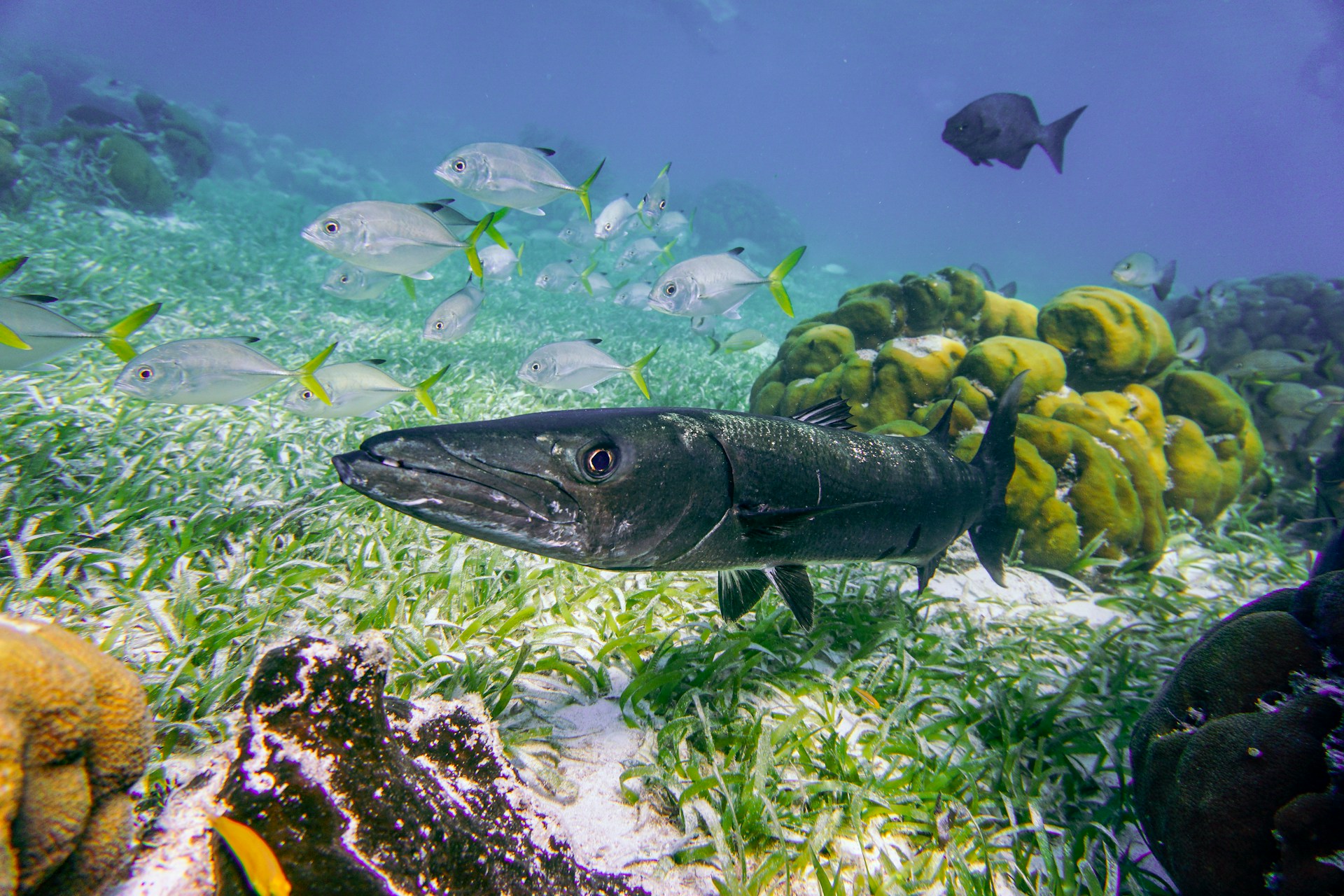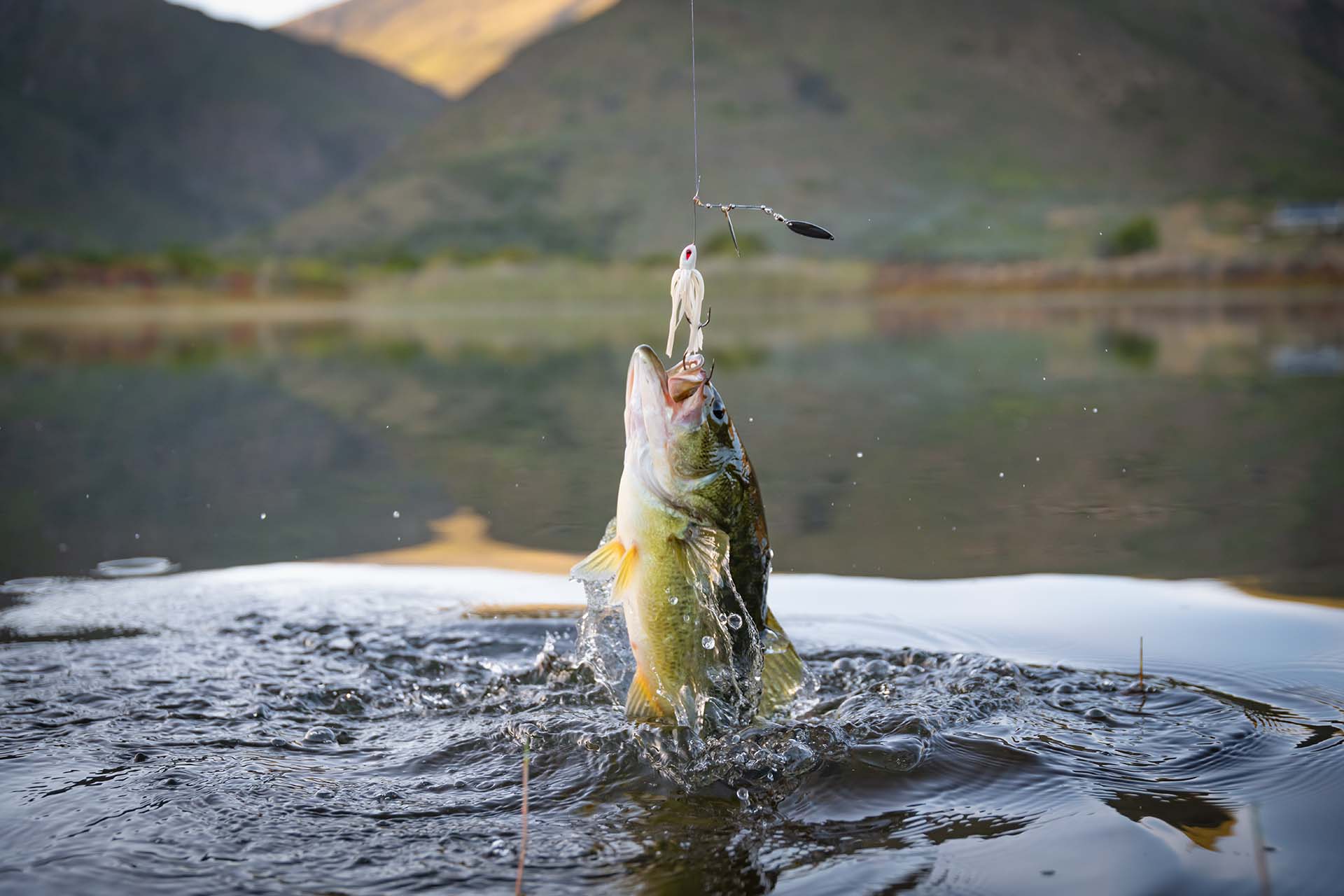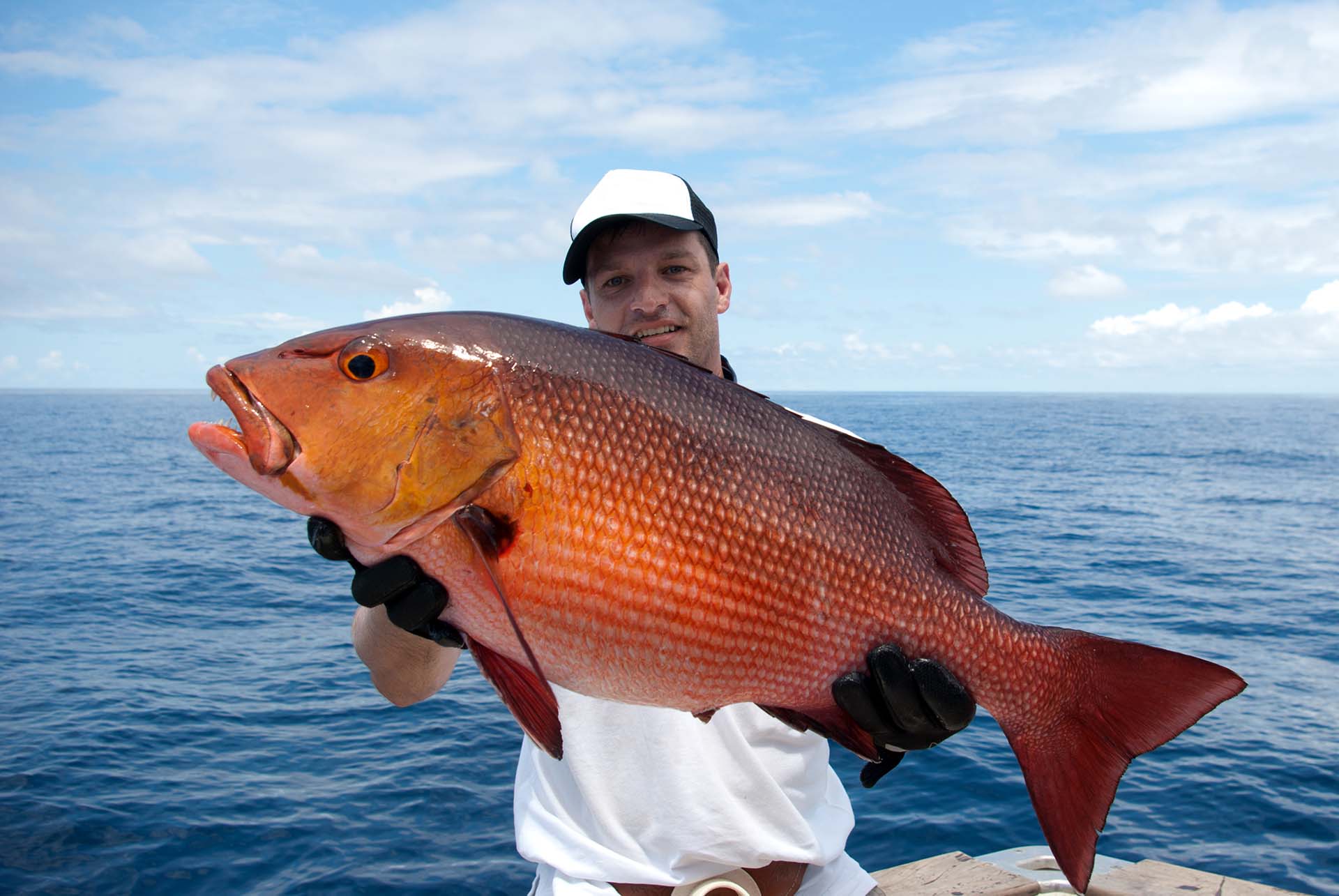Let’s be real – barracudas are fascinating marine predators, albeit frightening. That’s why we’ve decided to explore various types of barracuda, each exhibiting unique traits that make them formidable in their respective aquatic environments. Knowing a bit more about them is key to appreciating these creatures – here’s a glimpse into their underwater world.
This fascinating aquatic family includes several species, with the most well-known being the Great Barracuda. Other species include the Pacific Barracuda, European Barracuda, Blacktail Barracuda, and Yellowtail Barracuda.
The Main Characteristics of Barracudas – Speed, Teeth, and a Whole Lot of Attitude!
Barracudas are a remarkable and diverse group of saltwater fish known for their striking appearance and agile hunting skills. When it comes to identifying different species, learning about their general characteristics is crucial. Obviously, it comes in handy when it’s time to go fishing, but it’s always nice to know more about the fascinating creatures from down under.
These fish are renowned for their elongated bodies, powerful jaws, and sharp, prominent teeth. They exhibit a variety of behaviors that are fascinating to both marine biologists and anglers alike. Just don’t mistake their grin for a friendly one – those teeth mean business!
Common Physical Features – Sleek, Sharp, and Seriously Intimidating
The physical attributes of this fish species are distinct and play a pivotal role in their survival in the ocean’s depths. These features are important for anglers to know when trying to catch one. Some common characteristics shared by most species include:
- Elongated, streamlined bodies,
- Large, pointed heads with powerful jaws,
- Sharp, conical teeth,
- Dorsal fins set far back on their bodies,
- Silver or gray coloration with dark markings.
Life in the Fast Lane – General Behavior and Habitat
The general behavior and preferred barracuda habitats can tell you a lot about which fishing techniques could work. These aquatic wonders are primarily solitary creatures, though younger individuals may be seen in groups. Known for their speed and agility, they are adept hunters, preying on fish like snappers and small tunas.
Barracudas typically inhabit warm, tropical waters around coral reefs, seagrasses, and mangroves, where they can easily ambush prey. This versatility also means that they can be found in a range of waters, making them a common sight in many tropical and subtropical regions.

What Are the Major Types of Barracuda?
Exploring the different types of barracuda in the Pacific Ocean and beyond reveals a fascinating diversity within this species. Among the major types is the Great Barracuda, known for its impressive size and widespread presence.
However, this aquatic family stretches as wide as the ocean itself, with many different species of barracuda threading these waters. If you’re trying to hunt down some of these marine wonders but find yourself wondering why you can’t catch them, here’s what you need to know about the specific barracuda types:
Great Barracuda Characteristics
The Great Barracuda, distinguished by its silvery sheen and dark, horizontal stripes, is the largest in the family, growing up to 6 feet (1.8 meters) in length. One of the most important Great Barracuda characteristics is the fact that they’re primarily found in the warm, clear waters of coral reefs and seagrass beds. This includes everything from Florida and the Caribbean to the warm parts of the Pacific Ocean.
These apex predators exhibit unique behaviors such as hovering motionlessly in the water, using their excellent vision to spot prey before striking with remarkable speed. Their diet primarily includes fish and cephalopods.
Anglers seeking to catch them should focus on areas near reefs or shipwrecks, using live or artificial baits that mimic their natural prey. Fishing for them requires sturdy gear and safety equipment, as they are known for their powerful bites and vigorous fights when hooked.
Pacific Barracuda Characteristics
Notably smaller than its Atlantic counterpart, this creature is sleek and streamlined in appearance, typically reaching lengths of up to 2 feet. They have a distinctive silvery-gray coloration with a bluish tint on the back and faint dark bars on their sides. They are commonly found along the coast of California and southward to Baja California, inhabiting temperate inshore waters.
Pacific Barracuda fishing is a popular sport, as these fish are known for their aggressive strikes and spirited fights when hooked. Anglers targeting them often use live bait like sardines, anchovies, or shiny lures to mimic the movement of their prey. Trolling techniques or casting near schools of baitfish can be particularly effective.
Other Notable Species
In total, there are 29 recognized species from this marine family – so, identifying barracuda species is not a walk in the park. The Yellowtail Barracuda, recognized by its distinct bright-colored tail, prefers coral reef environments and is smaller in size. The European Barracuda, found in the Mediterranean Sea and eastern Atlantic waters, is known for its schooling behavior in younger years.
Another species, the Blacktail Barracuda, stands out with its dark tail and is commonly found in the Indo-Pacific region. Statistics show that these species, while less known than the Great and Pacific Barracudas, play a significant role in their respective ecosystems, contributing to the balance of marine life.
Barracudas Around the World – A Global Exploration of Species and Ecosystems
Barracudas are a globally distributed group of species, each adapted to its unique environment. From the creatures lurking in the waters of the Caribbean to the smaller species in the Pacific, these fish exhibit a fascinating array of physical and behavioral adaptations.
In the warm waters of the tropics, they are often seen near coral reefs, while in temperate regions, they tend to frequent rocky coasts and dense kelp forests. This diversity reflects their remarkable adaptability and evolutionary success across various marine ecosystems.
What to Expect When Going Barracuda Fishing In Different Geographical Locations?
Fishing for barracudas varies significantly depending on the geographic location. In tropical waters, anglers can expect to encounter larger species like the Great Barracuda, requiring strong gear and fast-moving lures.
Contrastingly, in areas like the Pacific Coast, smaller species may necessitate different tactics, such as lighter tackle and live bait. Preparation is key, including understanding local regulations such as fishing license requirements. Anglers should be ready for a strong fight and fast strikes, regardless of the location.
How Do Species Differ in Various Ocean Regions?
The main differences between various species across ocean regions include size, coloration, and behavior. Tropical species, like the Great Barracuda, tend to be larger and more solitary, while smaller species in temperate regions may school in their juvenile stages.
The coloration and patterning can vary significantly, adapted to their specific habitats for camouflage and hunting. These variations underline the adaptability and ecological diversity of barracudas in the global marine environment.

Ecological Role of Barracudas – Keeping the Underwater World in Check
The relationship between the marine ecosystem and barracuda species is a tale of its own. However, we’ve tried to narrow it down to the most important aspects:
| Role | Description |
|---|---|
| Predators | They control populations of smaller fish, maintaining balance in marine ecosystems |
| Indicator species | They signal the health of reef systems, meaning the changes in their population indicate environmental shifts |
| Prey for larger species | Barracudas serve as a food source for larger marine animals like sharks |
| Impact on coral reefs | They help maintain coral health by preying on herbivorous fish that overgraze on algae |
| Recreational fishing | Barracudas attract sport fishers, impacting local economies |
Fishing and Conservation – Catching These Giants and Protecting Them at the Same Time
Barracuda conservation is a vital aspect of marine ecology, focusing on maintaining sustainable populations while considering their role as both predators and prey. These fish are not only vital for the health of coral reefs and other marine environments but also have significant value in recreational fishing.
Efforts in fish preservation involve regulating angling practices, protecting habitats, and conducting research to better understand their life cycles and behaviors. Despite their fierce reputation, barracudas are more curious about humans than aggressive, but with that comes a certain responsibility. These barracuda interactions with humans also make them an interesting subject for underwater photographers and divers.
Barracudas as Game Fish
Different species are popular among anglers for their fighting ability and the challenges they present. Great Barracudas, in particular, are prized for sport fishing in tropical waters like the Caribbean and the Florida Keys. Anglers use specific techniques like trolling with lures or live bait to attract them.
Casting for them should be done in areas with plenty of cover like reefs or shipwrecks. Also, use wire leaders to prevent barracudas from biting through the fishing line. Their aggressive nature and speed make them an exciting catch.
Conservation Status and Efforts
The conservation status of this species varies. According to the Florida Museum, the species is not considered endangered or vulnerable, and this comes directly from the International Union for Conservation of Nature (IUCN).
However, their populations are affected by overfishing and habitat loss. Conservation efforts include monitoring populations, regulating fishing quotas, and protecting key habitats like coral reefs.
Research into their breeding and migratory patterns is also crucial for effective conservation. Sustainable practices and awareness among anglers and consumers alike are essential for preserving these fascinating species for future generations.

Face-To-Fin Encounters – When Barracudas Meet the Curious Human
Barracudas’ interactions with humans are often shrouded in myths, primarily about their supposed aggression towards swimmers and divers. In reality, while they are curious creatures, they rarely pose a significant threat to humans. Most incidents of bites are attributed to mistaken identity or defensive behavior rather than unprovoked aggression.
Divers and snorkelers in tropical waters often encounter these fish, observing the intriguing barracuda behavior at close range. However, wearing shiny objects that resemble their prey can attract their attention, leading to rare but possible confrontations.

Ready to Get Your Fishing Gear and Capture These Incredible Predators?
Barracudas, with their diverse types spreading as wide as the oceans, play a significant role in the marine world. Each species, adapted to its specific habitat, showcases the incredible diversity and adaptability of marine life.
Whether you’re an angler seeking the thrill of capturing these agile predators or a marine enthusiast fascinated by their ecological role, barracudas offer a unique glimpse into the complexities of ocean ecosystems. So, with this knowledge in hand, are you ready to gear up for this exciting adventure?








